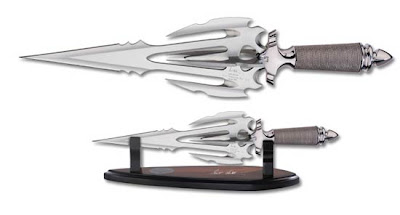We all know that a knife is made up of a blade and a handle, and that to get a really good knife takes a certain skill in creating and sharpening the blade. If you have ever seen the components of a knife before it was manufactured, you would be surprised that it doesn't look very much like the end product at all.
The finish is the most important stage of a good knife. The creation of a jeweled metal knife starts from the inside to create the beauty you will eventually see on the outside. A special kind of finish is a stonewash finish that gives the knife a "used" look from the day you buy it by putting some abrasive marks on it. This creates an older, seasoned look that is the way you want a knife to look, not like it is in the hands of an amateur. Or you can get a knife with a vibed finish, which means that it will have smaller abrasions than the stonewash finish to look slightly worn.
Annealing is the process used to make the best knives, but it will also make them more expensive since it is a difficult process to achieve. The next heating process for making knives is hardening. Tempering is then used to control the level of cooling of the metals after it has either been annealed or hardened.
Non stainless steel blades are stronger and more durable, so the idea is to have the exact mix of a metal that will be strong but not rust easily. Less chromium will make the blade stronger, but more susceptible to rust, and more chromium will make it less susceptible to rust but not as strong. Damasucus steel is a combination of two or more metals to make the steel extra strong, but it also is made with a special style that creates a beautiful patterned surface that is very popular in custome made knives.

























